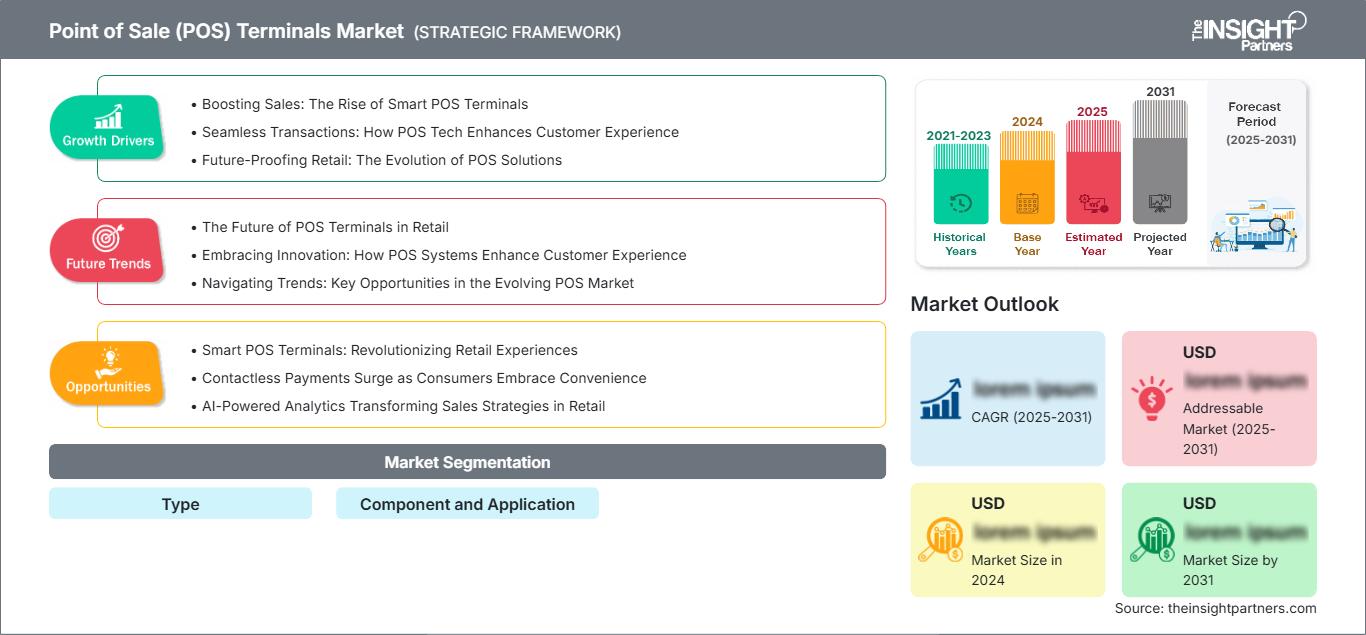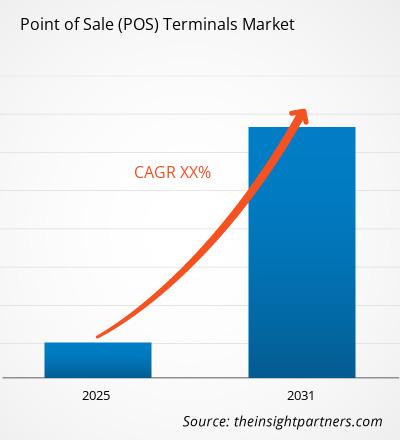销售点 (POS) 是交易完成的地方,也是客户向商家支付所购商品或所享受服务的环节。此时,商家会开具发票或计算客户应付金额,并提供付款选项。收到付款后,商家会开具交易收据。POS 终端的应用范围非常广泛,例如库存管理、账单打印、会员计划和支付。由于 POS 系统能够提高投资回报率 (ROI),近年来 POS 终端市场发展迅速。与传统系统相比,增强型 POS 系统具有更高的耐用性和可靠性,从而降低了拥有成本,从而增加了中小型企业对 POS 解决方案的需求。移动 POS (mPOS) 终端的出现,凭借其增强的功能(例如更佳的用户体验和移动性),对现有的支付和交易技术提出了挑战。使用 mPOS,客户可以在现场进行金融交易,从而提升客户体验。此外,与传统的固定POS系统相比,mPOS的初始成本较低,这在中小型企业中创造了巨大的需求。由于投资回报率的提高和对客户分析功能的需求不断增长,零售和酒店业对mPOS解决方案的需求正在快速增长。随着技术的进步,mPOS和无线终端的市场显著增长。这些系统具有许多重要优势,例如易于使用、部署成本低和移动性强。此外,智能手机和平板电脑在办公室的使用率也在增加,因此选择mPOS比固定POS终端更经济。无线通信技术的合理价格和支持TCP/IP连接的终端是mPOS终端增长的有利因素。全球POS终端市场按类型细分为无线POS、移动POS和固定POS。此外,根据组件,全球POS终端市场又细分为POS软件、POS硬件和POS服务。此外,全球POS终端市场可根据应用领域分为零售、娱乐、政府、仓储/配送、酒店、餐饮、交通运输等。全球POS终端市场按地区划分,可分为北美、欧洲、亚太、南美和中东及非洲。北美占据POS终端市场主导地位,其次是亚太地区。预计亚太地区将因中小企业增加和拥有成本下降而出现高增长。中国和印度拥有庞大的软件基础,这可通过在零售商店的推广对软件领域产生积极影响。POS终端市场的主要参与者包括松下公司、Ingenico SA、MICROS Systems Inc.、VeriFone Systems Inc.、NEC Corporation、Hewlett-Packard Development Company LP、PAX Technology Limited、思科系统公司、东芝公司和三星电子有限公司等。
您将免费获得任何报告的定制,包括本报告的部分内容,或国家级分析、Excel 数据包,以及为初创企业和大学提供超值优惠和折扣
销售点(POS)终端市场: 战略洞察

- 获取本报告的主要市场趋势。这个免费样本将包括数据分析,从市场趋势到估计和预测。
销售点 (POS) 终端市场区域洞察
The Insight Partners 的分析师已详尽阐述了预测期内影响销售点 (POS) 终端市场的区域趋势和因素。本节还讨论了北美、欧洲、亚太地区、中东和非洲以及南美和中美洲的销售点 (POS) 终端市场细分和地域分布。
销售点 (POS) 终端市场报告范围
| 报告属性 | 细节 |
|---|---|
| 市场规模 2024 | US$ XX million |
| 市场规模 2031 | US$ XX Million |
| 全球复合年增长率 (2025 - 2031) | XX% |
| 历史数据 | 2021-2023 |
| 预测期 | 2025-2031 |
| 涵盖的领域 |
By 类型 |
| 覆盖地区和国家 | 北美
|
| 市场领导者和主要公司简介 |
|
销售点 (POS) 终端市场参与者密度:了解其对业务动态的影响
销售点 (POS) 终端市场正在快速增长,这得益于终端用户需求的不断增长,而这些需求的驱动因素包括消费者偏好的演变、技术进步以及对产品优势的认知度的提升。随着需求的增长,企业正在扩展产品线,不断创新以满足消费者需求,并抓住新兴趋势,从而进一步推动市场增长。

- 获取 销售点(POS)终端市场 主要参与者概述
- 历史分析(2 年)、基准年、预测(7 年)及复合年增长率
- PEST和SWOT分析
- 市场规模、价值/数量 - 全球、区域、国家
- 行业和竞争格局
- Excel 数据集
近期报告
客户评价
购买理由
- 明智的决策
- 了解市场动态
- 竞争分析
- 客户洞察
- 市场预测
- 风险规避
- 战略规划
- 投资论证
- 识别新兴市场
- 优化营销策略
- 提升运营效率
- 顺应监管趋势






















 获取免费样品 - 销售点(POS)终端市场
获取免费样品 - 销售点(POS)终端市场